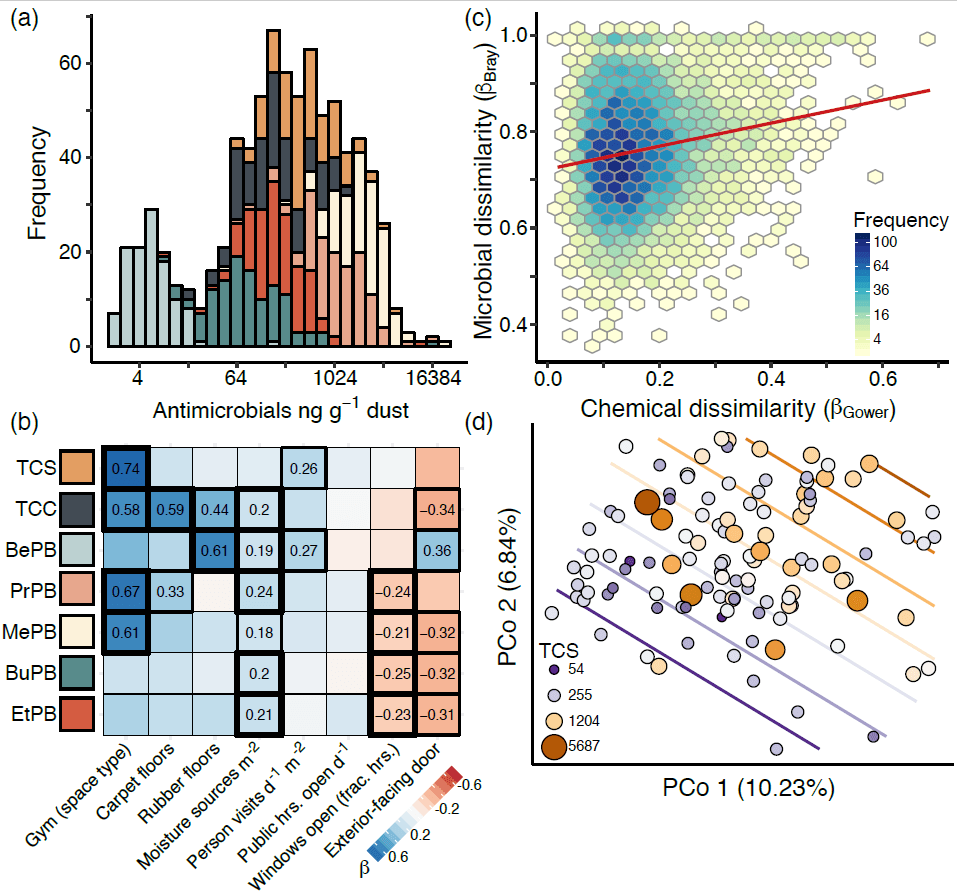Dr, Erica Hartmann, of Northwestern University, and Dr. Ashkaan Fahimipour, of BioBE, have been heading a study on the relationships between gyms, anti-microbial chemicals, and antibiotic resistant microbes. It turns out that while you lift weights, microbes are doing a few reps of their own, and getting stronger, too. There has previously been laboratory research on how antimicrobial chemicals interact with pathogens, but little research has been done on this topic in the field. These researchers are working on changing that. Fahimipour et al. went to 42 different gyms in Oregon to vacuum up some dust samples and test microbes and chemicals in the samples. While there are too many factors in the built environment to say anything definitive, Fahimipour et al. found a strong correlation between the higher levels of antimicrobials found in gyms and the presence of drug-resistant pathogens. Our research team was looking at some of the most common anti-microbial chemicals; triclosan, triclocarban, and five different parabens. These chemicals are found in everything from toothpaste and shampoos to furniture and children’s toys, and they are meant to prevent pathogenic microbes from growing, but it seems they potentially have serious consequences for our health. In addition to testing samples for the presence and concentration of anti-microbial chemicals, and the overall microbial community, the team specifically looked for microbes resistant to penicillin, macrolides, and tetracycline, all common antibiotic drugs.
Researching microbial communities in the built environment certainly poses challenges as it is inherently difficult to control all the factors of a complex ecosystem, but our findings expose the need for further field-based research on how antimicrobial chemicals might be encouraging microbial resistance, with implications for everything from cleaning products in hospitals to germ-killing coatings on gym equipment to the type of shampoo you use. Until we know for certain the causative relationships surrounding drug-resistant disease, it might be a good idea to avoid antimicrobial soap.
Check out the study here.
PBS wrote an article about our study! Read it here.

